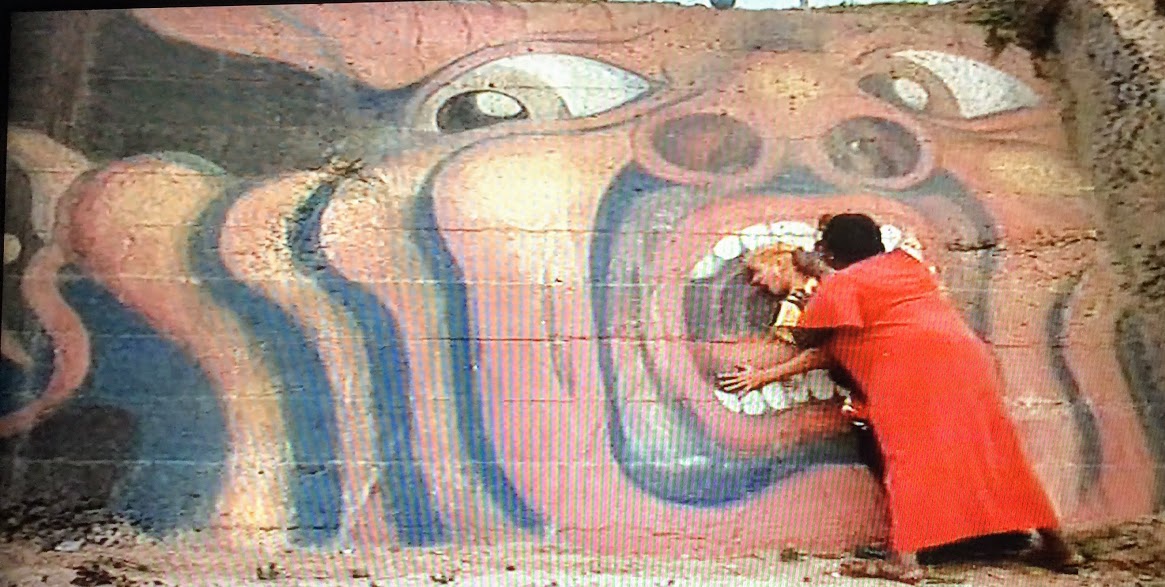
Review. Behold, my children. My magnum opus: Surf Nazis Must Die
More Videos
Published
4 years agoon
By
J.M. Brannyk
“There is no way that you are ever going to convince me that this is a good movie.” – My Glorious Spouse, 2020
Here we are, at the precipice of greatness. Finally.
Let me tell you a story. A love story.
Back in the old days of chunky rental boxes of VHS tapes, I remember first seeing the glistening box in the Horror section of Movie Mania. Back in those times, children, one would hitch up their horse and cart, traveling three miles in the snow, uphill, to rent a free horror movie every Monday night. And, after the arduous trek back, would blow the dust from the VCR player and jam that precious tape in to watch a hidden relic of the past. And it was worth it. It was damn well worth it.
One of those Mondays was very special for me and was the day I watched “Surf Nazis Must Die”. I fell in love – hard. I don’t want to say it changed my life, but here I am reviewing movies and getting paid, so you tell me, pal.
When I first met Glorious Spouse as an awkward teenager, this was a movie I shared on one of our dates. When I met new friends, I shared this. When I met GS’s friends, I shared this. It was not only a beautiful piece of schlock I admired to be shared, but also a litmus test; an endurance and reactionary experiment for me to gauge them. Did they see what I saw??? Could they feel what I felt?
No. Obviously. You saw the quote and obviously it wasn’t a deal-breaker, but it became the anathema I earned, as in, “Yeah, but you also think ‘Surf Nazis’ is good (so your opinion of movies is questionable)”.
Yeah, I did think it was good.
And you know what…I friggin’ still do.
So, my friends, let me try to open your mind and bring you into the nightmarish world of loss, madness, and revenge. In honor of Black History Month and in memory of Gail Neely, who played one of my favorite protagonists in all film history, I present to you: the review and exploration of Surf Nazis Must Die.

The Plot:
In the near future, a devastating earthquakes leaves the California coastline in shambles. The beaches are controlled by gangs, one of them being surf-friendly Neo-Nazis under the regime of “Adolf”, the self-proclaimed “Führer of the new beach”. Using the calamity and chaos to his advantage, he gathers the other gangs with the message of join his order or die on the sand.
During the same tragedy of the earthquake, widower Eleanor Washington has lost her only home. Her adult son helps her into her new residence, a senior home, where she finds it difficult to adapt. She’s seen as a trouble-maker and instigator – smoking, gambling and not being complacent in her new rigid and infantilizing atmosphere.
The two stories intertwine when Mama Washington’s son is viciously murdered by Adolf and his gang. After losing the only thing in her life, Mama begins her descent into anger, madness and revenge against those who took her son’s life. Let it be known that Surf Nazis must die!!!
The Nazis:
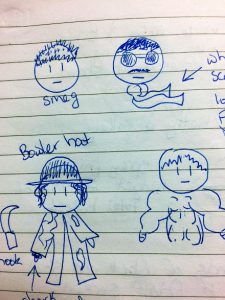
Most of the narrative is focused on the Surf Nazis and their interactions. Even the first shot is that of a young child, punk hair and cheeks painted with swastikas, shouting back cadenced authoritarian rhetoric to a stoic “Adolf”, within a group of other young children. Some of the Nazis have original Reich monikers like Eva, Adolf’s bitch (her words, not mine), and Mengele (the Valley-speaking Q who creates surfboard switchblades and whatnot). However, others do not share in the Nazi heritage: Brutus (the sensitive fighter), Hook (Alex from A Clockwork Orange meets Captain Hook), and Smeg (oh, I’ll talk about him later).
And then we have Adolf. Who is….dramatic. Laughably and adorably so. So much drama in this one. Drama and dreams. Dreams of leading all of the gangs of the beach (kind of like the beginning of Warriors, but as a Nazi d–head).
The Nazis live on the beach and in abandoned buildings, struggling through their existence by extorting other gangs, stealing from “normal” people, and eliciting the help of the young and dumb (we’ll get to Smeg, don’t worry). They are not powerful, really. They are sad. They are taunted by the other gangs. They sustain themselves by killing and eating wild pigs (?). And just as often as they band together, they tear each other apart. They are vicious and damaged. They are fumbling in their pursuit of power, and aimless in their violence. They have no agency, engagement, or efficacy.
The Mama:

Enter our protagonist. And yes, it could be easy to point out that there are certain characteristics, maybe even certain stereotypes, that are part of the “Mama” Washington character. She is a strong Black woman – Bible-carrying but is also sassy and sharp-as-tacks. She smokes cigars and gambles with her new friends at the senior home, telling them that she’s going to bring life into “them bitches”.
I admit, there are almost Madea-esque traits, but I would say whereas the usual Older Black Female character is sometimes a cruel, shrieking portrayal with a touch of bitterness, Gail Neely plays Mama with so much heart and warmth, it’s hard not to be endeared by her performance. There are some moments of audacity, but it’s never cruel; it’s at the core of the character. There are genuine moments of tenderness and vulnerability within her strength and conviction. Gail Neely brings such life and grit to this character. She is an unconventional hero and badass. Yes, this character was written by a white male, but I believe it was done so with endearment to the character and her role as victim and avenger.

And this is evident by the juxtaposition of her core concepts and motivations from the Nazis. She is the anti-Adolf. She is older. She is woman. She is Black. She is a nurturer and mother. She has purpose. She has agency. She has engagement with those around her. And you bet your sweet toots that she has efficacy. Mama Washington has power in her own life, even when she is deemed powerless (**see chainsaw vs tree scene**). She is the very opposite of Adolf and the Nazis, and it’s utterly surprising find something so rounded and in-depth in something so…Troma, let’s say?
The 21st Century Schizoid Man
There are really good shots in here. Really. Very clever camera work, no joke. I wrote that down a few times in my most recent viewing.
However, the most memorable and recognizable shot from the film is the Schizoid Man. In this incredibly dramatic point, Mama comes in first contact with one of the Nazis as he’s describing the death of her son. She grabs him and slams his head against a graffiti-painted wall. But it’s not just graffiti:
This is actually King Crimson’s album cover for 21st Century Schizoid Man, which is also featured as a song of general chaos, war imagery, death, destruction, and the desensitization of the human spirit from those elements. It was most likely written in response to the Vietnam War.
However, in this powerful moment, the art of the album is appropriated and re-contextualized. We see the pale head of a Neo-Nazi pushed against the mouth of a Black man, silently screaming in anguish. We see the older Black hand of a victim pushing the young and naïve racist perpetrator into that scream, into that direct confrontation of his superficial ideology and his subservient actions. During which, she becomes numb to the violence (and faceless) she is subjected and now a part of.
I could probably write forever about that scene. I could write forever about most scenes that feature Mama Washington because the incredible job that Gail Neely does. Let’s everyone take the day off of work to discuss how incredible her performances are!
The Homework: Thick Brain Roll Juice
I read up some for this one. I did my homework. Originally, I actually was going to argue that they aren’t really Nazis, but counter-culture, living in a depraved environment with limited resources because they are bored, “too hip” and white.
While some of that may be true (youpieceofcrapSmeg), the homework I did proved me wrong. Terrifyingly wrong.
It’s easy to watch this film for the laughs, for the fun, for the tie dye beach gang, Adolf’s awkward line reads, the gobs of slow-mo surfing, and Gail Neely’s poetic performance.
But the fact is that it’s not just a fun vacuum of cinematography and over-the-top acting. Watching this, it’s easy to dismiss this as a campy romp. Like I said, I was originally going to talk about turf wars and lack of seething resentment because they didn’t really strike me as Nazis. Assholes, yes. Nazis, no.
In fact, the very first paragraph of An Ethnographer Looks at Neo-Nazi and Klan Groups The Racist Mind Revisited by Raphael S. Ezekiel speaks exactly to that point and to my casual dismissal,
Americans today often learn about Nazis and the Ku Klux Klan through television clips of rallies or marches by men uniformed in camouflage garb with swastika armbands or in robes. These images often carry commentary implying that the racist people are particularly dangerous because they are so different from the viewer, being consumed by irrationality. The racists and their leaders are driven by hatred… Raphael S. Ezekiel
The same can be said for the films that we watch, Surf Nazis Must Die included. How Hollywood portrays the Nazi (Neo- or otherwise) changes over time. Our limited scope of understanding changes with those waves of popular culture, whether one is the impact of the other.
In a paper by Geoffrey Cocks entitled Hollywood Über Allies: Seeing the Nazi in American Movies, Cocks describes the road to Surf Nazis and beyond in the public cinematic sphere:
By the late 1960s, a skeptical, critical, and even cynical consciousness about the contemporary world had entered even Hollywood. Newly empowered teenage consumers and the Vietnam draft made the American film Nazi-unlike 1940s war films-big antiwar box office material because the Nazi now stood for any totalitarian oppression for young radicals outraged by American racism and the war in Vietnam. Bank of America became Bank of Amerika, and police became “fascist pigs.”
The 1970s in America brought a wave of still more problematic interest in Hitler, the Nazis, and the Holocaust, in which a mix of agnosticism, cynicism, hedonism, and nihilism prevailed over 1960s iconoclasm and idealism. The Nazi became a “floating signifier” for trivial fanaticism or madness: a “lawn Nazi,” a “feminazi,” a film demanding that Surf Nazis Must Die (Peter George, 1987)
From the 1980s on, ever more of international cinema hewed to the Flollywood-style entertainment movie. With the exception of a few films about American neo-Nazis, the Nazi and the German became less topical and central, even those about the war, and so tended to serve only the blandly realistic or the distantly metaphorical. But the Nazi yet retains his cinematic potency.
The weakness in Tarantino’s postmodern play is the weakness that had been growing and maturing in film ever since the Second World War: cinema grows so self-referential, so caught up in the economic conversation between Hollywood and American culture, that it ceases to be critically reflective. Cocks, Geoffrey. “Hollywood Über Alles: Seeing the Nazi in American Movies.” Film & History: An Interdisciplinary Journal, vol. 45 no. 1, 2015, p. 38-53. Project MUSE muse.jhu.edu/article/589137.
So, let’s dumpster-dive into the history a little to separate fiction and fact, or maybe even find some similarities. Before the 80’s, when this movie was filmed, the KKK was the anchor for much of the white power movement and didn’t mix with the emerging Nazi party in the US. But then the 80’s came with its Flashdances, Reaganomics, and Rubicks Cubes, and the two more or less started to merge into a smelly shitstain of grossness, and “concepts/symbols started being used indiscriminately between the groups“. (Ezekiel, pg. 52)
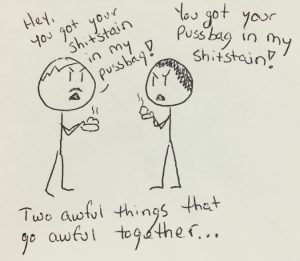
This happened partly because “some separatists feel that the old Klan is a ‘dinosaur,’ not aggressive and technical enough in its approach of asserting dominance and power. This view has led to the formation of other divisions of hate groups.” (Anderson, James F., Laronistine Dyson, and Willie Brooks Jr. “Preventing hate crime and profiling hate crime offenders.” Western Journal of Black Studies 26.3 (2002): 140) By 1994, (four years before Surf Nazi’s first DVD release) different watchdog groups estimated hard-core militant membership around 23,000 to 25,000, with approximately 150,000 sympathizers who subscribed to the ‘zines, and another 450,000 people who read the issues for the articles but didn’t buy. (Ezekiel, pg. 52-53)
During that time, between 1955 and 1998, white racists were responsible for more than a third of deaths related to domestic terrorism between, excluding the 168 individuals killed in the Oklahoma City bombing (Parkin, William S., et al. “Ideological Victimization: Homicides Perpetrated by Far-Right Extremists.” Homicide Studies, vol. 19, no. 3, Aug. 2015, pp. 211–236, doi:10.1177/1088767914529952.). And people of color are more often. Just in 1997, of the hate crimes committed, 8,049 bias-motivated criminal incidents were reported. Of these incidents, 4,710 were motivated by racial bias (Anderson).
But…but surfing! And….fun! And….switchblade surfboards! They just silly-billy Nazis!
Sure, let’s talk about the group – it’s dynamics and how it operates.
As previously mentioned, the first shot of the movie is at youth gathering with Adolf, establishing the supremacy of the Surf Nazis as the masters of the beaches. In fact, that the beach is in a bitter and bloody turf war, mostly because of the Nazis, which isn’t that surprising: “The movement makes its claim, in the ideology, to a turf and declares its role as defending that turf.” “…an ideology that glorifies toughness and fears tenderness or nurturance as weakness.” (Ezekiel) And we’ll circle back to the high tension created by them, too, so put a pin in that.
Let’s first talk about the one who pulls it all together. Even with his campy flair for the dramatic, Adolf still manages to manipulate and lead his group and terrorize the other gangs. This is well-put by Ezekiel in a few different sections:
The power to attract members comes from the leader’s certainty and his capacity with words and body to be the living expression of the resentment and anger of the listeners. Moreover, he can make his listeners feel that they are part of something that is happening, that these are not empty words.
In most cases, the leader is not extremely racist. Racism is comfortable for him, but not his passion. At core, he is a political organizer. His motive is power. Racism is his tool. He feels most alive when he senses himself influencing men, affecting them.
His disrespect includes his followers. He respects only those, friend or foe, who have power. His followers are people to be manipulated, not to be led to better self-knowledge.
We see this demonstrated in different ways, like the way he treats Eva, the way he beats Mengele, and his general indifference to the others. He is aloof, but intense, drawing on each group’s fears and insecurities…via drama!
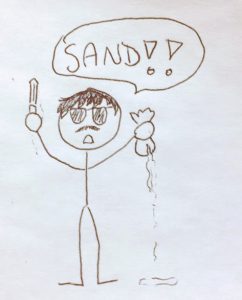
Now let’s talk about “Smeg”.
He’s also a piece of shit who comes from a loving, providing, un-apocalyptic home. His mom even tucks him in at night as he whines that he can’t go and play with Adolf and the rest. This is where you realize that civilization hasn’t crumbled. People still live in nice middle-class homes. People still go to work. People watch TV. People drink New Coke. People are existing and thriving, not living in the beach slums, eating wild (?) pigs. And to do so is by choice.
The apocalyptic backdrop is a facade as a means to an end. The disruption of the earthquake actually means very little, as any situation real or imagined, will have the message of apocalypse, as it is a means for Adolf to control and manage the group to do his bidding:
Any measure is justifiable in this war for survival. If innocent people die, it is unfortunate but a given in a war of survival. All this is heard repeatedly in leadership presentations, and its apocalyptic energy animates the larger movement gatherings. EZEKIEL, RAPHAEL S. “An Ethnographer Looks at Neo-Nazi and Klan Groups: The Racist Mind Revisited.” American Behavioral Scientist, vol. 46, no. 1, Sept. 2002, pp. 51–71, doi:10.1177/0002764202046001005.
American Nazism’s historic preoccupation with society’s decay and racial erosion demonstrates its anticipation of the arrival of a catastrophic new millennium.Brad Whitsel (2001) Ideological Mutation and Millennial Belief in the American Neo-Nazi Movement, Studies in Conflict & Terrorism, 24:2, 89-106, DOI: 10.1080/10576100117722
It’s not that the world is in chaos, the Nazi perceive and perpetuate the idea that the world is in chaos to justify their actions – whether its eating a wild pig (?), stealing a purse, or killing a Black man…
Let’s talk about Leroy’s Death (played by Robert Harden).
One study was particularly heartbreaking as it pieced a very tight puzzle to Leroy’s death in the movie to actual homicide victims of Neo-Nazis. Trigger warning; it’s really, really sad.
Victim–offender relationships show that 72.6% of victims had no prior knowledge of their killer(s)
99% [of racially targeted people] (or 59.2% of all victims) were killed because of something they represented, whether a specific race, religion, or even government. Here, the offender had no knowledge of the victim or their personal actions, only that they represented the population the offender was targeting.
Anti-race/ethnic minority victims were also killed more often by a knife, blunt object, or bodily weapon when compared with the anti-abortion and anti-government victims.
…almost 30% of anti-racial/ethnic minority victims were killed while walking or driving on the street.
These victims [racially motivated] had the most violent deaths. Often excessive force was used to beat them to death with blunt objects and bodily weapons. Mutilation and overkill were not uncommon.
The variance in overkill and modus operandi also could be a by product of a subculture of violence, such as those held by neo-Nazis and skinheads. Parkin, William S., et al. “Ideological Victimization: Homicides Perpetrated by Far-Right Extremists.” Homicide Studies, vol. 19, no. 3, Aug. 2015, pp. 211–236, doi:10.1177/1088767914529952.
So….now what?
This is a very real reality that is still happening to this day, especially as the growth of hate groups and crimes have increased dramatically over the US, and even more, that they are changing. They may not be huge groups, but they are influential groups and they evolve. As two researchers put it:
Social movements in the cultic milieu are by no means stable, nor do their beliefs or organizational patterns remain constant.Rather, groups in this constellation tend to be ephemeral and are governed by a lifecycle process. Over time, these collectivities ultimately fractionate and, in doing so, give birth to new groups. The process is cyclical and facilitates the recycling of ideas (and groups). This continual process of cult birth, reformation, and death suggests that the cultic milieu is a permanent part of society, while the individual cult is a transitory phenomenon. Brad Whitsel (2001) Ideological Mutation and Millennial Belief in the American Neo-Nazi Movement, Studies in Conflict & Terrorism, 24:2, 89-106, DOI: 10.1080/10576100117722
Low activity is not equivalent to no activity, particularly when white supremacist activity spikes in response to major social change like the election of the country’s first black president. Cooter, A. (2011), Neo‐Nazi Nationalism. Stud Ethn Nation, 11: 365-383. doi:10.1111/j.1754-9469.2011.01126.x
As fun and campy as this movie is, it is based on fact and fantasy. Unfortunately, in real life, Mamas don’t get to but guns that “take a head off a honkey in twenty paces” and exact revenge. They exist in a culture that created the killer and perpetuates racism (whether loud or quiet) via complacency and institutionalized undertones. And do so, in our norms and conventions, silently.
And it’s easy to be complacent and to not understand the institutional affect when you’re far-removed. It’s a understandable reaction to watch this movie and not identify with any of the Nazis because they are so extreme. They cannot be us. We don’t kill people. We don’t paint swastikas on our surfboards.
But…I just want to have fun and watch my movie 🙁
Of course watch this movie and have fun! Watch the hell out of it – I love it! Remember, this is a love story. Enjoy the camp, enjoy the revenge and goofy surfing. It’s there for you to enjoy and love as your own.
But it’s also a great moment to contemplate, to take a step back and think, especially for us honkeys (we honkeys?). Some great advice for this can, of course, be found in multiple sources, but taking from Ezekiel’s final thoughts on the matter in his paper on Neo-Nazism in America:
Probably the greatest effect of White racism today is its capacity to slow institutional change. Policies that help institutional racism to continue to flourish do much more to hurt minority people than do hate crimes.
And it is worth noting that the neo-Nazis are not totally alien to White Americans. A social attitude does not exist in the mind as an isolated single entity. Real attitudes, or orientations, are laid down throughout life in layer after layer.
The task is to get acquainted with those layers of oneself—to learn to recognize them and not be frightened by them. It is not a disgrace to have absorbed some racism. It is a disgrace not to know it and to let those parts of ourselves go unchecked.
It’s easy not to have a switchblade swastika board, but it’s becomes convoluted if you defend saying the n word, or roll your eyes at #whiteoscars. Its the latter that fuels the former and is the foundation on which its built.
The Bottom-line:
Oh…you’re still here? That’s surprising.

Don’t judge me.
When not ravaging through the wilds of Detroit with Jellybeans the Cat, J.M. Brannyk (a.k.a. Boxhuman) reviews mostly supernatural and slasher films from the 70's-90's and is dubiously HauntedMTL's Voice of Reason. Aside from writing, Brannyk dips into the podcasts, and is the composer of many of HauntedMTL's podcast themes.

You may like
3 Comments
Leave a Reply
Cancel reply
Leave a Reply
This site uses Akismet to reduce spam. Learn how your comment data is processed.
Last night’s episode of American Horror Story Delicate was wild. From its star-studded start to its powerfully quiet finish, I was enthralled through every moment.
Let’s discuss.
The story
We begin this episode at the funeral of Dex’s mom. While he’s giving a eulogy, which was very nice, Ms. Preecher walks in. She shouts to the room that Virginia didn’t commit suicide, she was murdered. She also tells Dex to listen to his wife.
What a concept!
Touched by this, or maybe just curious, Anna goes to the hospital to check on Preecher. She falls asleep at the hospital. When she wakes up, Preecher is gone. A nurse says that she was discharged to a group of women.
While at the hospital, Anna also discovers that she’s been nominated for best actress.
At a publicity event for the awards, Anna runs into Cora. And she sees the coat she remembers from her late-night visit near the start of her pregnancy.
With the slightest amount of pressure, Cora spills it all. She and Dex have been having an affair, and Cora was trying to sabotage Anna’s pregnancy. So Anna, channeling her inner Madison Montgomery, kicks him out and heads to the awards ceremony with Siobhan.
There, Siobhan asks her if she wants an Oscar more than anything. If she’d be willing to give up anything for it.
And Anna says yes.
The bargain is then sealed with a kiss.
What worked
I’d like to begin, paradoxically, at the end of the episode. We’ve seen Anna have some terrible, loud, frightening hallucinations in this season. At least, we assume they’re hallucinations. But this one wasn’t loud. It was, in fact, very quiet. Anna is led off stage, without a word, leaving nothing but a puddle of blood behind.
In horror, like in all art, the notes you don’t play are as important as the ones you do. And the notes that weren’t played her rang like a bell.
I also appreciated that this episode describes why being a celebrity would be a huge pain in the ass. Imagine going to an event where the whole purpose is for people to take pictures of you while holding their product. Imagine if they invaded your personal space, sprayed things on you, put things over your eyes, and you were expected to smile and pose.
I don’t know what it is about being a celebrity that makes others feel entitled to a person. To talk with them, take their time, and share in their moments. To touch them without consent. Yes, there are way worse things happening to people. But this isn’t a great way to live. It’s no wonder so many of them go nuts. This is most clearly shown in the scene when Anna is sitting next to Preecher’s bed. She wakes up to find the older woman gone. But all anyone wants to talk about is how she was just nominated for an Oscar. At that moment, she doesn’t give a damn. She cares about this kind woman, and where she’s gone. Just like any other person.
Finally, I appreciated that this season didn’t do what so many AHS seasons do. Which is to say that this episode didn’t feel like the last episode. It felt like the penultimate episode. It felt like there was still more story to tell, not just loose ends to be wrapped up. I appreciate that the writers have finally learned that lesson.
For this season, at least.
What didn’t work
The first thing that bothered me in this episode was Cora’s confession. I said something about this during our live-watch event on Threads. (Join us next week for the finale. Bring popcorn and wine.)
I don’t believe Cora’s confession. I further don’t believe that she just dumped all of this incriminating info on Anna with no more prompting than a wide-eyed look. There was just no reason for it. So, Anna saw her coat? Lots of people have similar coats. This feels fake, and she brought no receipts.
I also found Siobhan’s behavior confusing. At times she seems genuinely concerned for Anna’s wellbeing. At other times, she is more than willing to let her suffer and risk her pregnancy.
While this has been going on all season, it was happening every few minutes in this one. Either Siobhan cares about the welfare of that fetus, or she doesn’t. But she needs to pick a lane.
All in all, I don’t know what to expect from next week’s season finale. Anna has her Oscar, but now she might lose her baby. She might also get sucked into some horrible cult and experience a bad death. We won’t know until next week.
See you then.
 (4 / 5)
(4 / 5)
Episode two of Amazon Prime’s Fallout was equal parts funny and bloody. This almost always leads to a good time.
The story
We begin this episode with the birth of some puppies that look like they’ve had a rough start to life. Each one is weighed, with the ones who fall short being incinerated.
One pup who is just below the correct weight gets a bit of a thumb on their scale. The scientist weighing them, Wilzig, writes down the proper weight. He later takes the puppy home to raise instead of putting them into what looks like an unforgiving training program.
Eventually, we see Wilzig put some blue glowing thing into his neck. When a soldier comes for him, Dog attacks the soldier, and the two escape.
We go from there to the wilderness, where Lucy is recovering from the last episode and enjoying a campfire at night. Wilzig and Dog come out of the shadows, saving Lucy from a bug monster. Wilzig tells Lucy she should go home. And if she’s not going to go home, she needs to evolve.
The next day Lucy finds her way to a town called Filly. As a Pennsylvanian, it hurts me to spell it that way. Lucy is entranced by this town, though clearly put off by the fact that no one is very nice here.
She eventually finds her way to a shop run by a delightful woman named Ma June. Ma doesn’t seem particularly interested in helping Lucy. Or, frankly, having Lucy in her shop.
Or in her town.
Eventually, Wilzig is tracked to this same shop, being tracked by The Ghoul. This is our final primary character. Lucy defends Wilzig, being aided at the last moment by Maximus.
Maximus, by the way, has been having a terrible time. After finally becoming a squire he’s disappointed to find that his knight, Knight Titus, is a terrible person.
Fortunately, Maximus doesn’t have to put up with Titus for long. After Titus gets the bright idea to go hunting, he’s attacked by a mutated bear. Maximus freezes, unable to save him. Then, well, he decides not to save him.
It was Titus’s idea to go hunt the bear, after all.
What worked
The first thing I want to draw attention to is the shootout scene at Filly. This scene checked every box a fight scene should check. It was fun to watch, with great effects. But it also gave us insight into the characters. Lucy is a decent fighter and has a strong moral compass. The Ghoul is callus and desensitized to death. And Maximus continues to be, well, sort of bad at this whole fighting thing. But with enough moral fortitude that we have a hard time blaming him.
Of course, I would be remiss if I didn’t mention the dog. Who’s name, as far as I’ve been able to ascertain, is just Dog. Which is fine. He doesn’t need to have a name to be a very good boy. He’s sweet, loyal, and fearless.
Also, puppies. Puppies are always great.
Finally, I’d like to shine a spotlight on Lucy’s reaction to the world at large. She is both amazed and terrified by everything. And while she certainly doesn’t want to be rude, she also doesn’t want to be taken advantage of. The best example of this is when she stops to ask for directions with a bright smile and a gun.
Once again, I don’t have anything bad to say about this episode. It was funny, dark, and fun to watch. I’m very much looking forward to the rest of the season.

Launching with worldwide excitement, Fallout is based on the extremely popular game series of the same name. Fans of the series have waited with anticipation and trepidation to see if the Prime series would live up to the game.
Having now watched the first episode I can say that, so far, it’s successful.
The story
Our story begins with a children’s birthday party. A performer is there with his daughter, giving horse rides and taking pictures with the kids.
As much as the adults try to focus on the party and the kids, it’s impossible to ignore the looming threat of war that’s on everyone’s mind.
Of course, it’s during this party that war comes, and the bombs drop.
We then cut to after the war and into one of the vaults established to protect humankind and the American Way. For future reference, this is Vault 33. We meet Lucy, our first main character, who’s petitioning to be married to a man from Vault 32 to ensure DNA diversity.
On the wedding night, though, Lucy and the rest of Vault 33 are met with a horrible surprise. The group they let in is not in fact from Vault 32, but is instead a team of raiders from the surface. The raiders kill a lot of the vault dwellers and kidnap Lucy’s father.
We are then introduced to our second main character, Maximus. He is in training to become a Knight in the Brotherhood of Steel. And, well, he’s not doing great.
Things get worse when his best friend Dane becomes a squire before him. But when Dane is hurt, Maximus gets their spot.
We then go back to Lucy, who has decided to leave the vault and find her dad. Of course, the council of her vault doesn’t want her to go. So she is aided by her brother Norm and cousin Chet in a wild escape.
What worked
The first thing that deserves attention is the exceptional character work. Our three main characters are fleshed out and relatable right away. We feel sympathetic for The Ghoul before he’s even introduced as such. We love Lucy’s nativity and selflessness. And we love Maximus for his honesty and passion for his cause.
While these characters are their own people, they also exhibit the three responses we might expect to see in a post-apocalyptic world. We have the hopeful optimist who doesn’t understand how bad things are. We have the aspiring hero who wants to make the world better by force. And we have the self-serving individual who’s given up on the rest of humanity and is only focused on surviving.
Another thing I enjoyed about this episode was the balance of humor and gore. Because there was certainly enough blood and guts for even the most hardcore horror lover. We had a violent sabotage, a brawl with raiders, and even several nuclear bombs.
But there were a lot of funny moments as well. Usually from Lucy. Her overall goodwill and fearless gumption are absolutely hilarious, especially given the horrors she’s facing. It never ceases to amuse me.
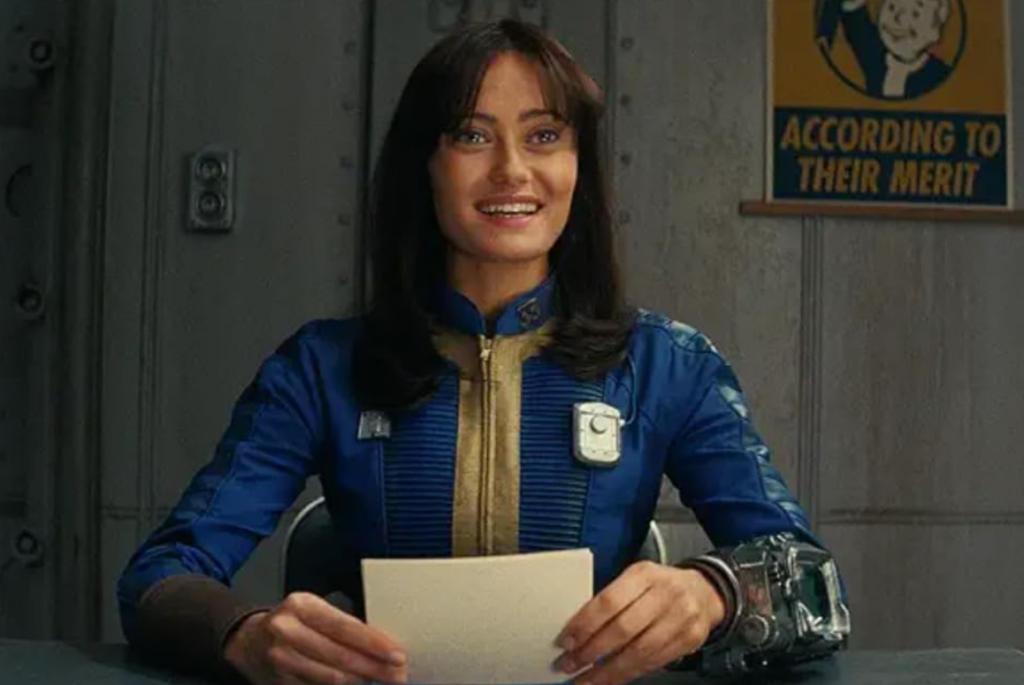
Both of these aspects are done perfectly. The jokes land and the bloody scenes pull no punches. It was delightful.
All in all, this was an exciting start to a much-anticipated series. Here’s hoping they’re able to stick the landing.
For more tv shows based on video games, check out my review of Witcher.






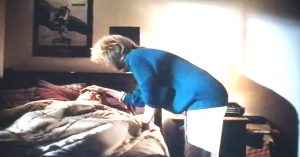



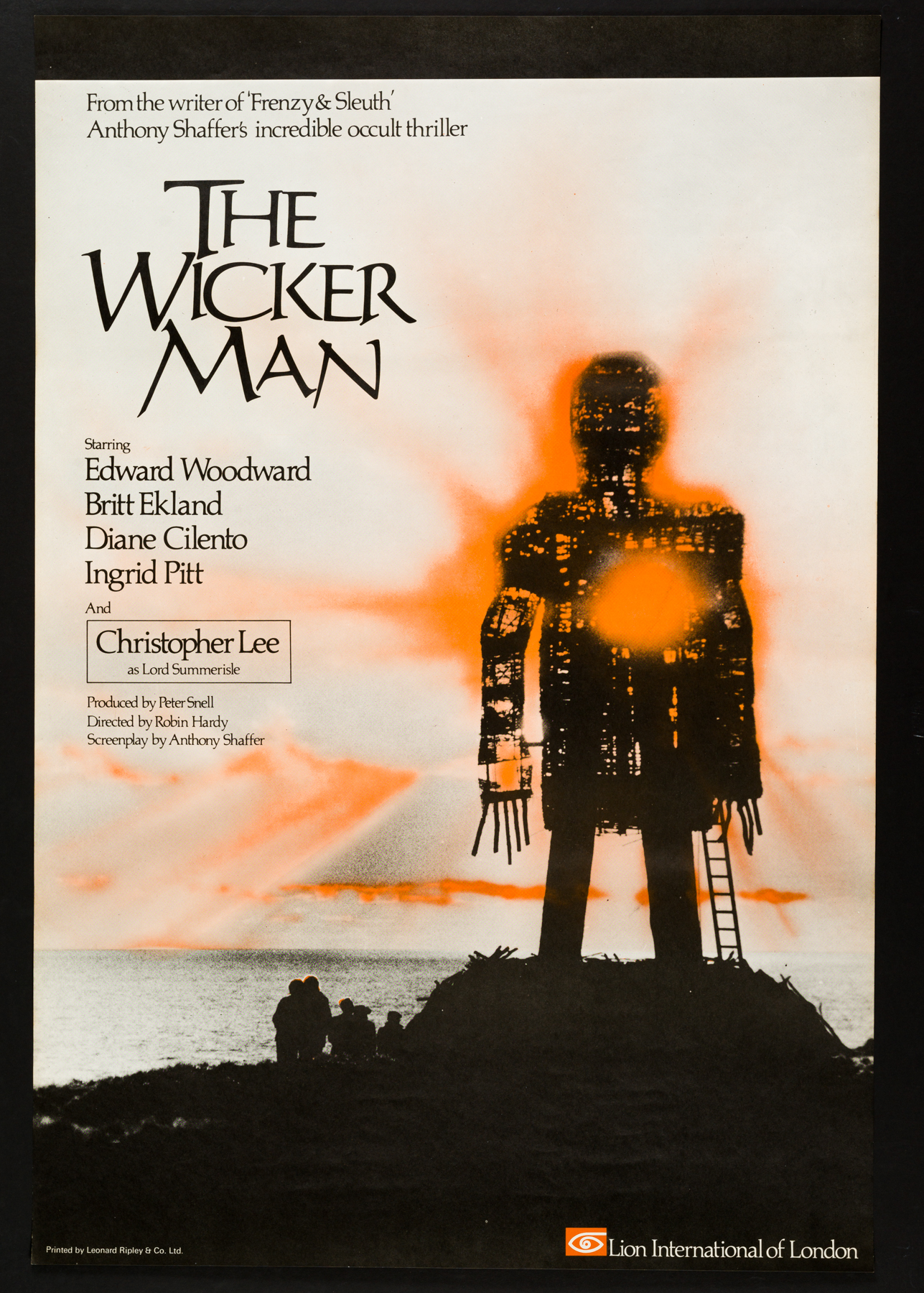

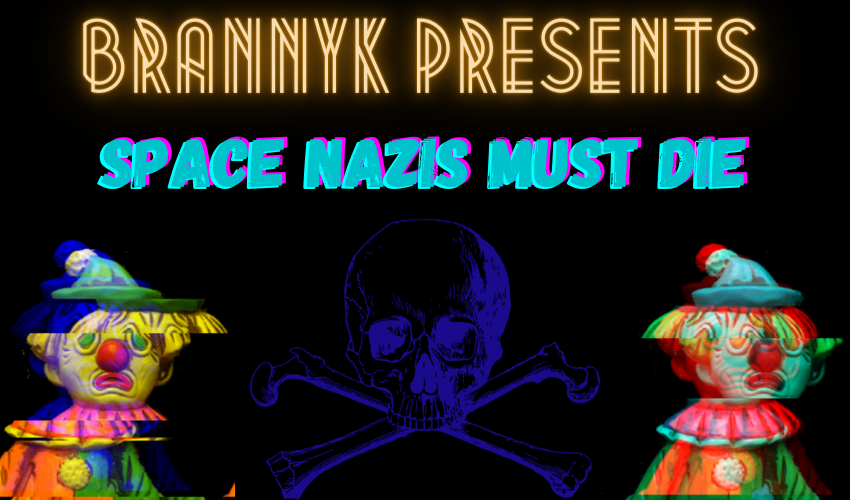


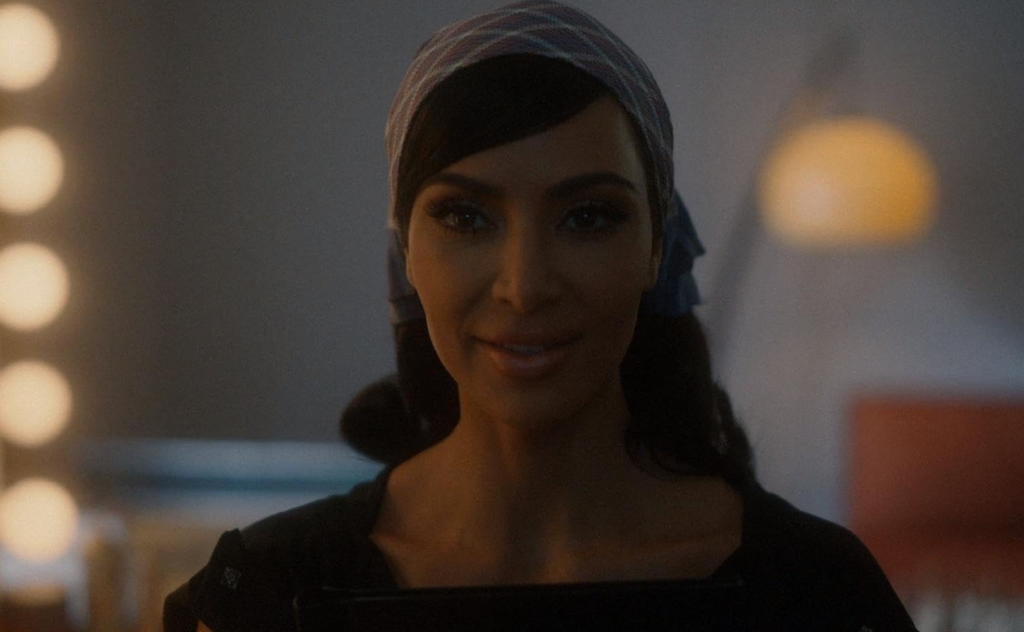
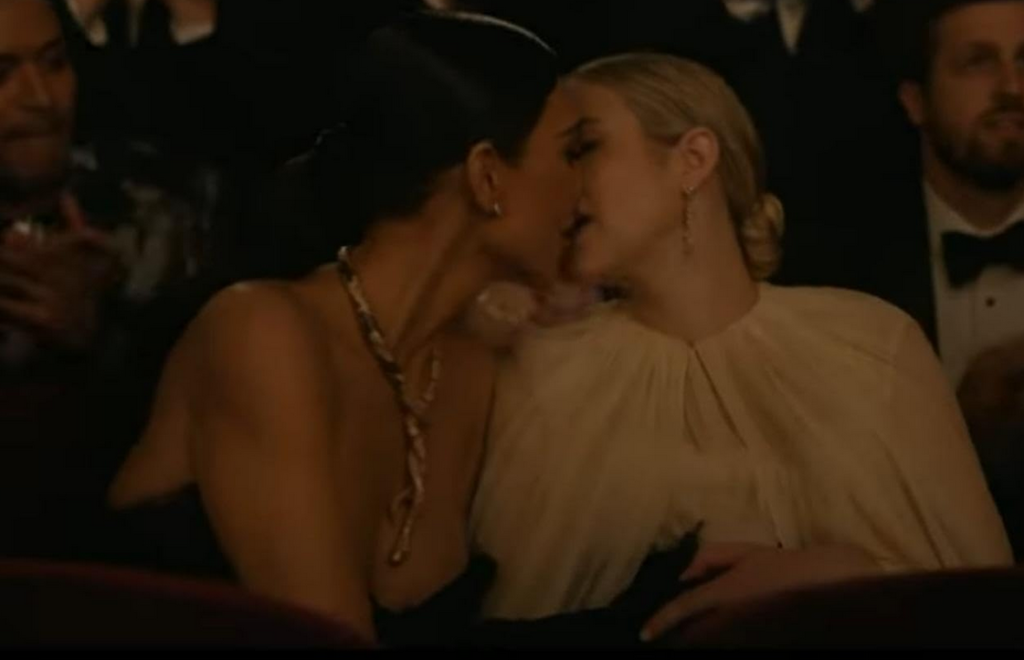
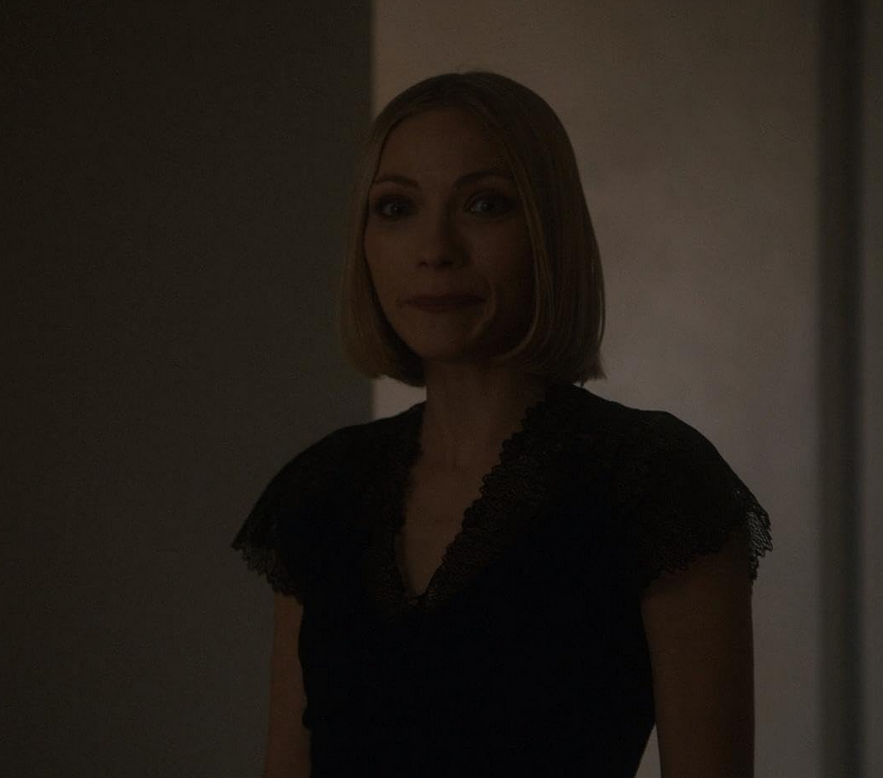

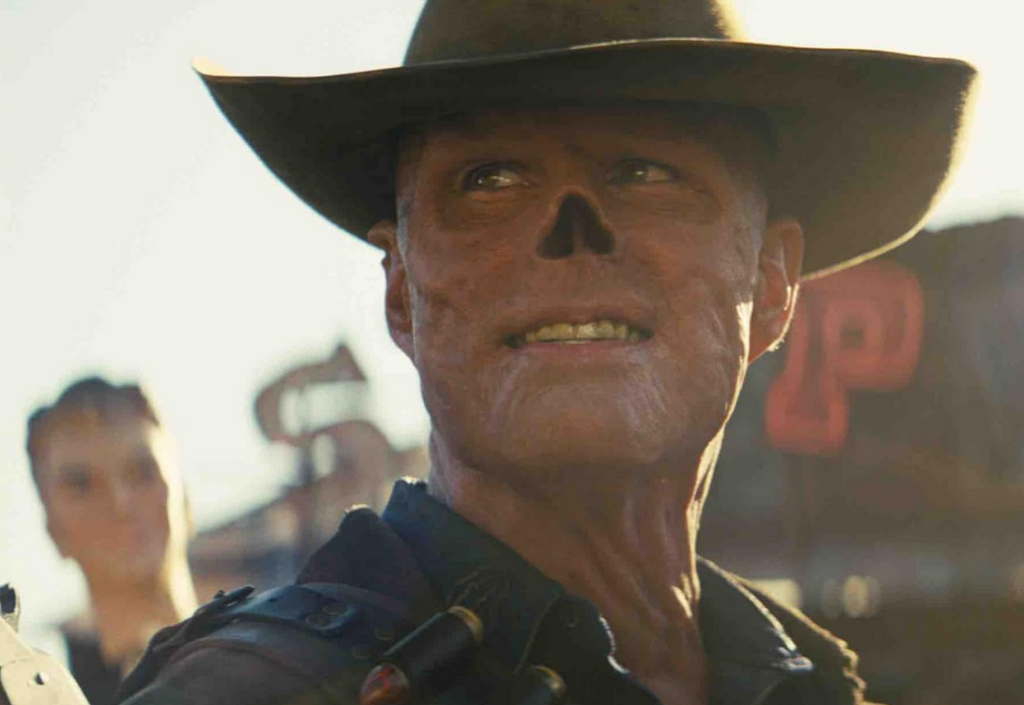



John Combo
February 29, 2020 at 12:54 pm
Even the trailer is awesome! They actually put this in line with The Road Warrior and The Terminator! I’m not even sure if they weren’t trying to be serious! Awesome review!
Patricia Dartt
March 1, 2020 at 2:56 pm
Awesome review. Actual thought on the movie not just glossed over fun or not fun. Not just talk about the visual aspects or acting. I like that you really researched here. You also mentioned the typical acting and cinematography and fun factors anyone would expect. Good job.
Pingback: When Films Go Too Far I Can Help - Haunted MTL